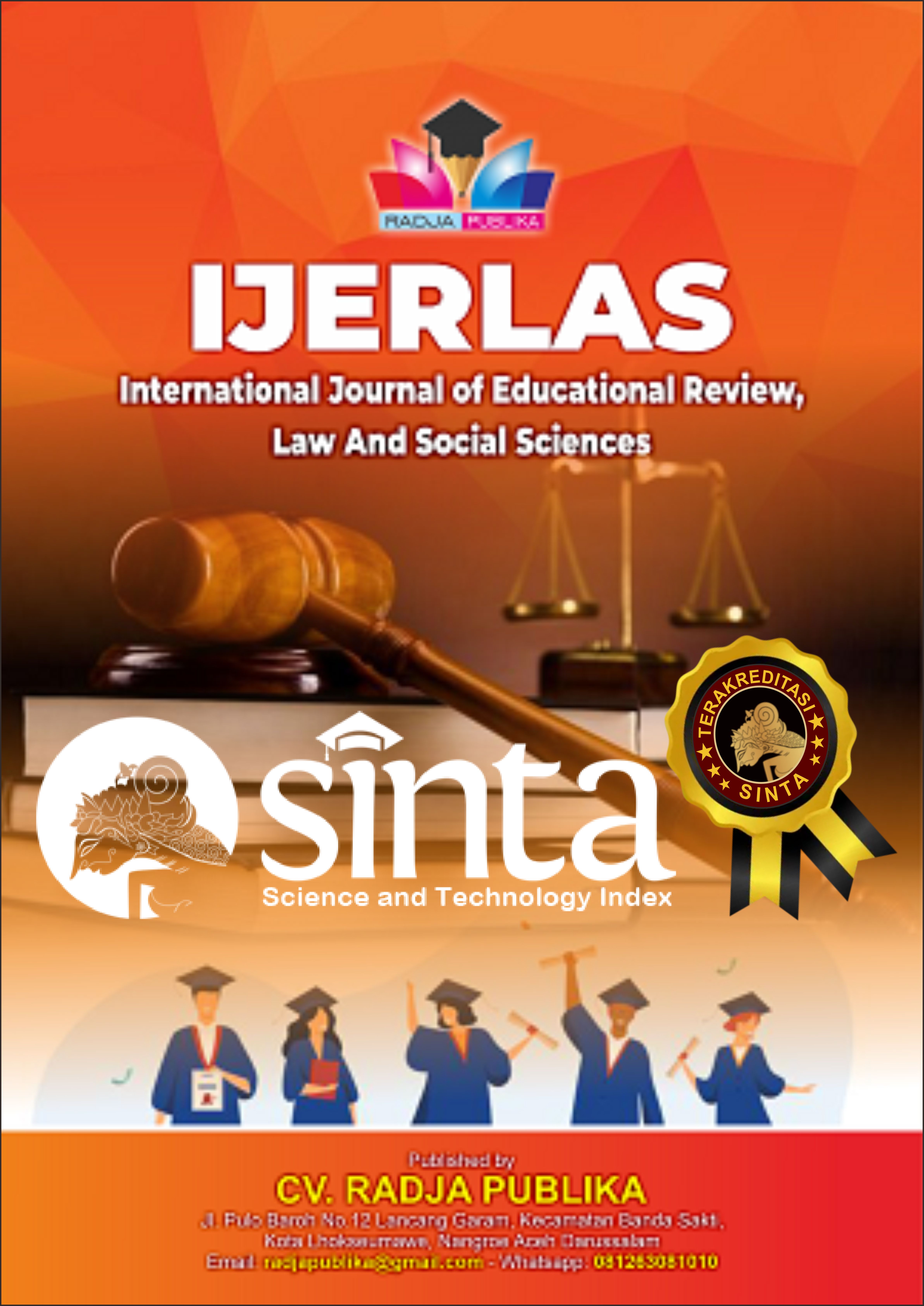CUSTOMER SATISFACTION MEDIATES E-SERVICE QUALITY TOWARDS USER LOYALTY IN MOBILE JKN USERS
Main Article Content
Tria Monika Dewi
Hery Winoto TJ
Melitina Tecoalu
Universal Health Coverage (UHC) means everyone has access to the qualityfiedhealthcare anytime and anywhere they need it, without financesproblems. In order to realize UHC, the Indonesian Government has implemented the National Health Insurance program (JKN/KIS) which is organized by BPJS Health. Along with increasingly rapid technological developments, BPJS Health is implementing health innovationcalledMobile JKN. Therefore, it is necessary to evaluate whether the public feels satisfied and loyal to theservicequality from the health application. The research sample was taken from 105 respondents who had used the Mobile JKN application at RS P Cirebon more than once and were >18 years old. Data was obtained through a random questionnaire via Google Form. Questionnaire data was processed using the Microsoft Excel application and analyzed using SEM-PLS (Structural Equation Modeling-Partial Least Square) and SmartPLS version 4 application. The research results show that e-service quality has a significant positive effect on customer satisfaction and user loyalty of Mobile JKN with p-values of 0.000 and 0.0005 respectively. Customer satisfaction has a significant positive effect on user loyalty of Mobile JKN users (p-value 0.000), and e-service quality has a significant positive effect on user loyalty mediated by customer satisfaction of Mobile JKN users (p-value 0.000). These results are in line withprevious studies. We hopethat Mobile JKN application managers can continue to improve e-service quality so that they can make a positive and significant contribution both directly and indirectly to customer satisfaction and user loyalty, and expand the collaboration network with various health facilities.
WHO. (2024). Universal Health Coverage. WHO. https://www.who.int/southeastasia/health-topics/universal-health-coverage
Indonesia, R. (2011). UU Nomor 24 tahun 2011.
Bappenas. (2015). Rancangan Teknokratik Rencana Pembangunan Jangka Menengah Nasional (RPJMN) 2020-2024. Kementrian Perencanaan Pembangunan Nasional, 2015–2019.
DJSN, S. (2024). Sismonev DJSN. https://sismonev.djsn.go.id/sismonev.php#
Jabarprov. (2024). Program JKN Jawa Barat. Jabarprov. https://jabarprov.go.id/en/berita/program-jkn-jawa-barat-targetkan-uhc-98-persen-13332
Website, Jknm. (2024). JKNMobile. Website JKNMobile. https://jknmobile.com/
Govinsider. (2024). Strategi BPJS Kesehatan. Govinsider Asia. https://govinsider.asia/indo-en/article/strategi-bpjs-kesehatan-lindungi-275-juta-penduduk-indonesia-dengan-jaminan-kesehatan
Kotler, P., & Keller, K. L. (2013). Manajemen Pemasaran. Erlangga.
Larasati, T., Tj, H. W., & Soegeng Wahyoedi. (2024). Pengaruh Kualitas Pelayanan Dan Penanganan Keluhan Terdahap Loyalitas Pasien Bpjs Dimediasi Oleh Kepuasan Pasien Pada Klinik Mutiara Gading Medika Bekasi. Journal of Social and Economics Research, 5(2), 1856–1867. https://doi.org/10.54783/jser.v5i2.281
Santos, J. (2003). E-Service Quality: A Model of Virtual Service Quality Dimensions. Managing Service Quality. 233–246.
Komala, R., & Firdaus, A. (2020). Analisis Kualitas Layanan Mobile Jkn Terhadap Kepuasan Peserta Badan Penyelenggara Jaminan Sosial (Bpjs) Kesehatan. At-Tijaroh: Jurnal Ilmu Manajemen Dan Bisnis Islam, 6(2), 188–199. https://doi.org/10.24952/tijaroh.v6i2.2520
Supriyanto, S., & Ernawati. (2010). Pemasaran Industri Jasa Kesehatan.
Rico, ., Tecoalu, M., Wahyoedi, S., & Purnama, E. D. (2019). The Effects of Trust, Service Quality and Perceived Value on Satisfaction and Their Impact on Loyalty. August, 325–330. https://doi.org/10.5220/0008492603250330
Edeh, E., Lo, W.-J., & Khojasteh, J. (2023). Review of Partial Least Squares Structural Equation Modeling (PLS-SEM) Using R: A Workbook. In Structural Equation Modeling: A Multidisciplinary Journal (Vol. 30, Issue 1). https://doi.org/10.1080/10705511.2022.2108813
Asari, A., Zulkarnaini, Hartatik, & Sukwika, T. (2023). Pengantar Statistika (A. Asari (ed.)). PT Mafy Media Literasi Indonesia.
Sari, I., Winoto Tj, H., . F., Wahyoedi, S., & Tirto Widjaja, B. (2023). The Effect of Usability, Information Quality, and Service Interaction on E-Loyalty Mediated by E-Satisfaction on Hallobumil Application Users. KnE Social Sciences, 2023(46), 211–229. https://doi.org/10.18502/kss.v8i2.12765
Wong, K. K.-K. (2016). Mediation Analysis, Categorical Moderation Analysis, and Higher-Order Constructs Modeling in Partial Least Squares Structural Equation Modeling (PLS-SEM): A B2B Example Using SmartPLS. The Marketing Bulletin, 26(May), 1–22. https://doi.org/10.13140/RG.2.1.1643.0562
Utami, N. W., Wildan, M., Widodo, P., Kesehatan, P., & Malang, K. (2024). Efektifitas E-Servis (M-Jkn) Dan Pengaruhnya Terhadap Loyalitas Peserta Jkn Di Kota Malang. Jurnal Informasi Kesehatan Indonesia, 10(1), 66.
Sasongko, S. R. (2021). Faktor-Faktor Kepuasan Pelanggan Dan Loyalitas Pelanggan (Literature Review Manajemen Pemasaran). Jurnal Ilmu Manajemen Terapan, 3(1), 104–114. https://doi.org/10.31933/jimt.v3i1.707
Fransiska, C., & Bernarto, I. (2017). Pengaruh Kualitas Layanan terhadap Kepuasan Pelanggan dan Keberlanjutan Penggunaan pada Pengguna Aplikasi kesehatan. Jurnal Administrasi Bisnis (JAB), 94(2), 459–464.
NG, F., Tecoalu, M., & Wahyoedi, S. (2022). The Role of Customer Satisfaction in Mediating the Effect of Service Claim and Brand Image on Customer Loyalty at PT Asuransi Sahabat Artha Proteksi in Jakarta. Britain International of Humanities and Social Sciences (BIoHS) Journal, 4(1), 126–139. https://doi.org/10.33258/biohs.v4i1.598
Aditya, M. D., Saidani, B., & Febrilia, I. (2021). Pengaruh Service Quality dan Trust Terhadap Customer Loyalty dengan Customer Satisfaction sebagai Intervening pada Aplikasi Jasa Kesehatan X. Jurnal Bisinis Manajemen Dan Keuangan, 2(17), 399–405.
Lisdiana, I., Prasetyo, I., & Hartati, C. S. (2023). Kepuasan Pasien Sebagai Variabel Intervening Pada Pengaruh Fasilitas Dan Kualitas Pelayanan Terhadap Loyalitas. Jurnal Ekonomi Bisnis Dan Manajemen, 1(2), 50–63. https://doi.org/10.59024/jise.v1i2.92




























